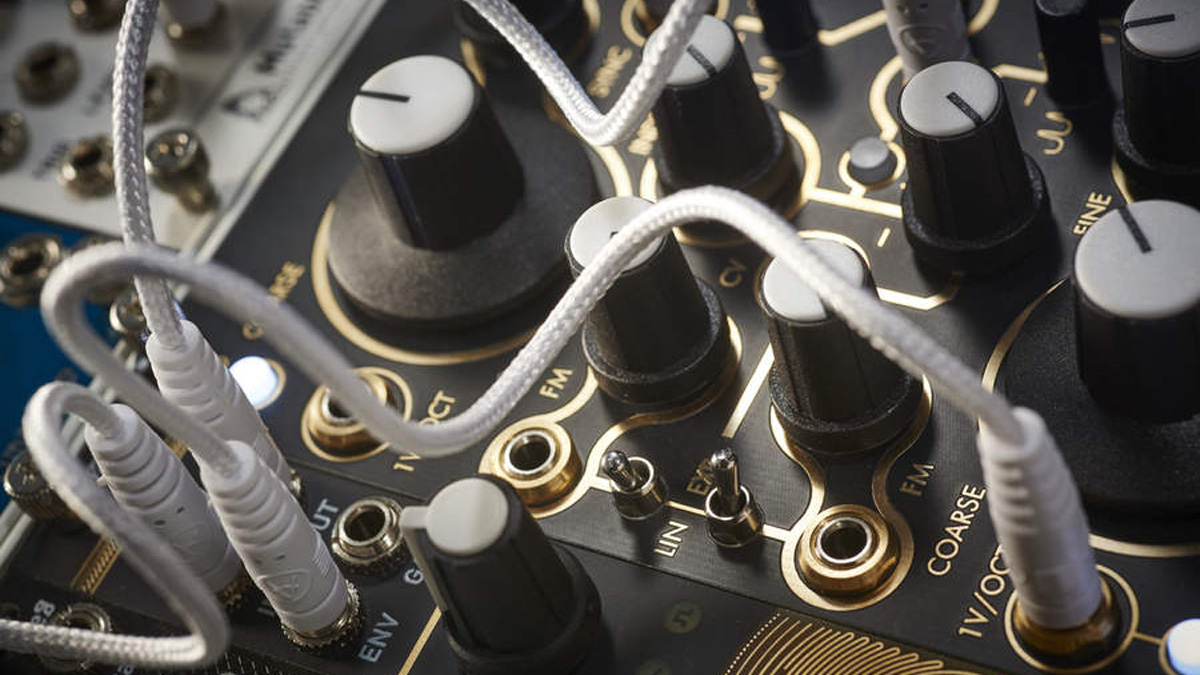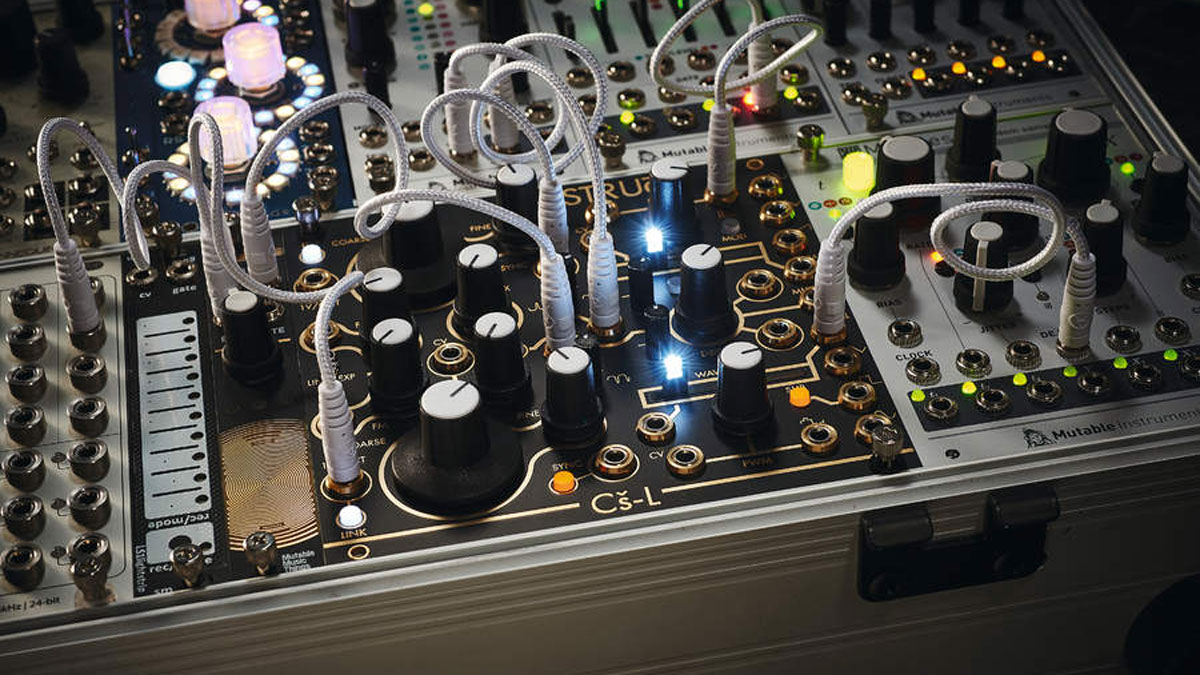MusicRadar Verdict
The panel layout and routing is a bit challenging but if we could only have one oscillator in our system we’d be happy if it was this one.
Pros
- +
A powerhouse dual analogue oscillator with a wealth of synthesis types.
- +
Internally routed cross modulation system.
- +
Sounds amazing.
Cons
- -
No CV over the depth control of the audio modulation section.
- -
Panel layout can make some controls tricky to get to.
- -
Internal modulation selection is not very intuitive.
MusicRadar's got your back
After leaving Qu-Bit Electronix and setting out with his own brand, Instruo, a little over a year ago, Scottish designer Jason Lim has developed an impressive lineup of Eurorack modules.
Instruo’s range stands out from the crowd with a striking design aesthetic and some unique twists on classic synth design. The Cš-L is its take on the complex oscillator, a design pioneered by Don Buchla with the 259 module in the ’70s that typifies the West Coast paradigm of creating complex tones from simple sine waves by way of analogue frequency modulation and wavefolding.
There are many complex oscillators available in Eurorack with perhaps the DPO from Make Noise being the most well known. So what sets the Cš-L apart? For frequency modulation you typically have a carrier oscillator that provides the initial tone and a modulator that affects the carriers’ frequency.
In the Cš-L either oscillator can act as the carrier or modulator or they can both modulate each other simultaneously. The two oscillators have fundamentally different cores (triangle at the bottom, saw at the top) giving a greater range of sonic potential than with two identical cores.
The sine wave of each oscillator is internally routed to the opposite oscillators FM input by way of a VCA. Either linear or exponential FM can be used for each oscillator but not both at the same time as you can on the DPO. For classic FM sounds, sine waves are always used for modulation, but you can patch any other signal into the FM input for more experimental results.
The Cš-L goes beyond with a comprehensive internal routing system that allows cross modulation of the wavefolder amplitude and symmetry. Holding the index button the six panel buttons double up to select the destination, with the amount of signal fed to each input is controlled by the associated attenuverter with the Index knob and associated VCA as an overall control.

The placement of the routing buttons is unfortunately not very intuitive and although an illustration is provided, it took me a while to get my head around what was controlling what. To be fair, the learning curve was complicated by how much fun I was having just getting lost in the sounds. We had to remind ourselves we were trying to analyse how the control system worked!
Instruo’s panels are beautifully designed with a distinctive matte black and gold aesthetic, but there is a bit of a compromise ergonomically. With patch points scattered all over the panel, once you have some patching going on it becomes a bit crowded and we did find ourselves tweaking oscillator B’s fine tune knob a few times rather than the Index attenuverter which is just above it and looks exactly the same.
We much prefer the knobs-at-the-top, jacks-at-the-bottom design that many manufacturers use. A complex oscillator generally has one final output through a wavefolder but the Cš-L has one for each oscillator allowing you to use the two main voices at once. The wavefolder overdrives into a slightly rounded fuzzy square when pushed to its extreme and it’s completely muted when turned down so it can also function as a VCA of sorts. In a small system this is pretty handy although you do lose out a little on timbre control.
Types of Frequency Modulation
The Cš-L can switch between two types of frequency modulation: linear and exponential. Linear FM shifts the carrier pitch by a number of hertz rather than semitones, enabling the VCO to stay in tune unless the modulation depth is pushed really hard. This makes it more suitable for melodic lines. Exponential FM works the same way as the 1v/oct scale, it creates more aggressive sounds and causes the VCO to go out of tune when you change the modulation depth so it’s more suitable for atonal noises or percussion. There is a third type called linear through-zero FM which allows the VCO to stay in tune regardless of the modulation depth by reversing the waveform when it hits 0Hz. This is how digital FM works and it has now been implemented in a few analogue oscillators as well. Unfortunately the Cš-L does not feature through-zero FM.
The FM and wavefolding both sound fantastic with smooth organic sounds under subtle modulation, and harsh metallic Autechre-like textures, bell tones, horn sounds and much more to be discovered. The sound is distinctly different to the DPO (the only complex oscillator we have to hand for comparison) and we found it very difficult to duplicate the sound of one with the other. The DPO has a thinner, harsher tone overall.
Sitting between the top and bottom oscillator sections you’ll find the Audio Modulation section and the Multiply output which takes the complexity in a different direction, though it’s a shame there’s no CV input here. This can be switched between ring modulation, half or full wave rectification.
By default the two inputs are again fed from the opposite oscillator sine wave but you can patch other waveforms or external signals in and use it independently of the rest of the module. This section could also be used to rectify control voltages before using them in other parts.
Moving beyond the complex oscillator paradigm, the Cš-L has two variable width pulse outputs, the top being a classic pulse wave that has quite a dirty tone. The bottom is called a Double Pulse; this looks like a stepped triangle where the width of the top and bottom steps shift in opposite directions under modulation and it sounds like an octaved square.
There’s also a standard square wave out that can be dropped one or two octaves below the main frequency for a sub out. The Cš-L is a very flexible oscillator, it ticks all the boxes for a classic West Coast voice. The Audio Modulation section offers an alternate take on building complexity from simple sine waves and the different PWM options take it into East Coast territory.
The internal modulation routing provides a lot of sonic potential without a single patch cable. Once you start self-patching, the range of tones you can tease out of this module is huge. When it comes to analogue synthesis this module covers a lot of ground. It’s not quite a full synth voice and you need quite a few modulation sources to get the most out of it but it’d make a great core for a system.










